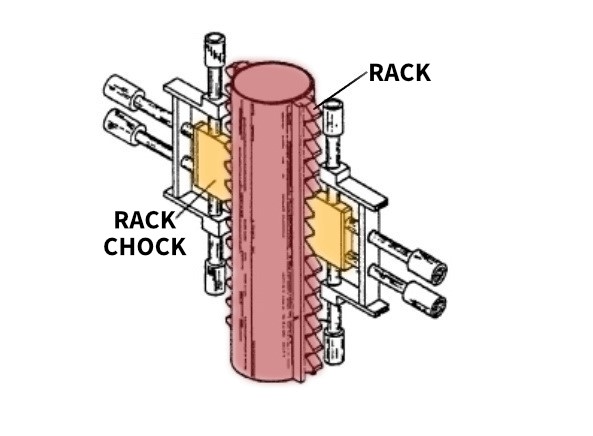When the hull is elevated, its weight is transfered through the rack to the pinions and jacking tower. Due to the slight movement caused by weather elements, weight is burdening the pinions, especially lower ones.
The same happens when jackup is in afloat condition, and legs are raised.
Horizontal movement of the legs is affecting the pinions, and might cause uneven loading or uneven wear.
Leg fixation systems are designed to cope with that problem by transferring the loads between the hull and the legs, disburdening the pinions. Such systems transmit the loads between the leg and the hull in a more efficient way, or at least they provide additional support, thus reducing and equalizing the load on the pinions and leg guides.
Such systems were designed for jackups to withstand larger severe criteria and/or increase allowable load. Use of leg fixation system will allow higher strong criteria for given leg design, or allow lighter legs for same conditions.
With such system installed, rack and pinions are only used when jacking.
When the jackup is in a floating or elevated state, fixation systems bear the load. That relieves the pinions and reduces the stress on the leg structure. Here are the advantages:
- Load is distributed evenly between the legs, reducing the stress on individual components.
- The pinions are relieved of excessive stress. This reduces the risk of pinion failure.
- Jacking system can be serviced while the legs are fixed in position. This simplifies maintenance and allows uninterrupted operations.
- Leg fixation systems enable the construction of jackups with fewer pinions and simpler leg structures. This results in significant weight savings, increased load-bearing capacity, and cost efficiency in construction.
It should be remembered that these systems are normally not engaged during the rig moves, jacking operations and preloading procedures.

As you can see on the example image, those systems are just a piece of “counter-rack”, which is locked into the rack by means of hydraulics or screws.